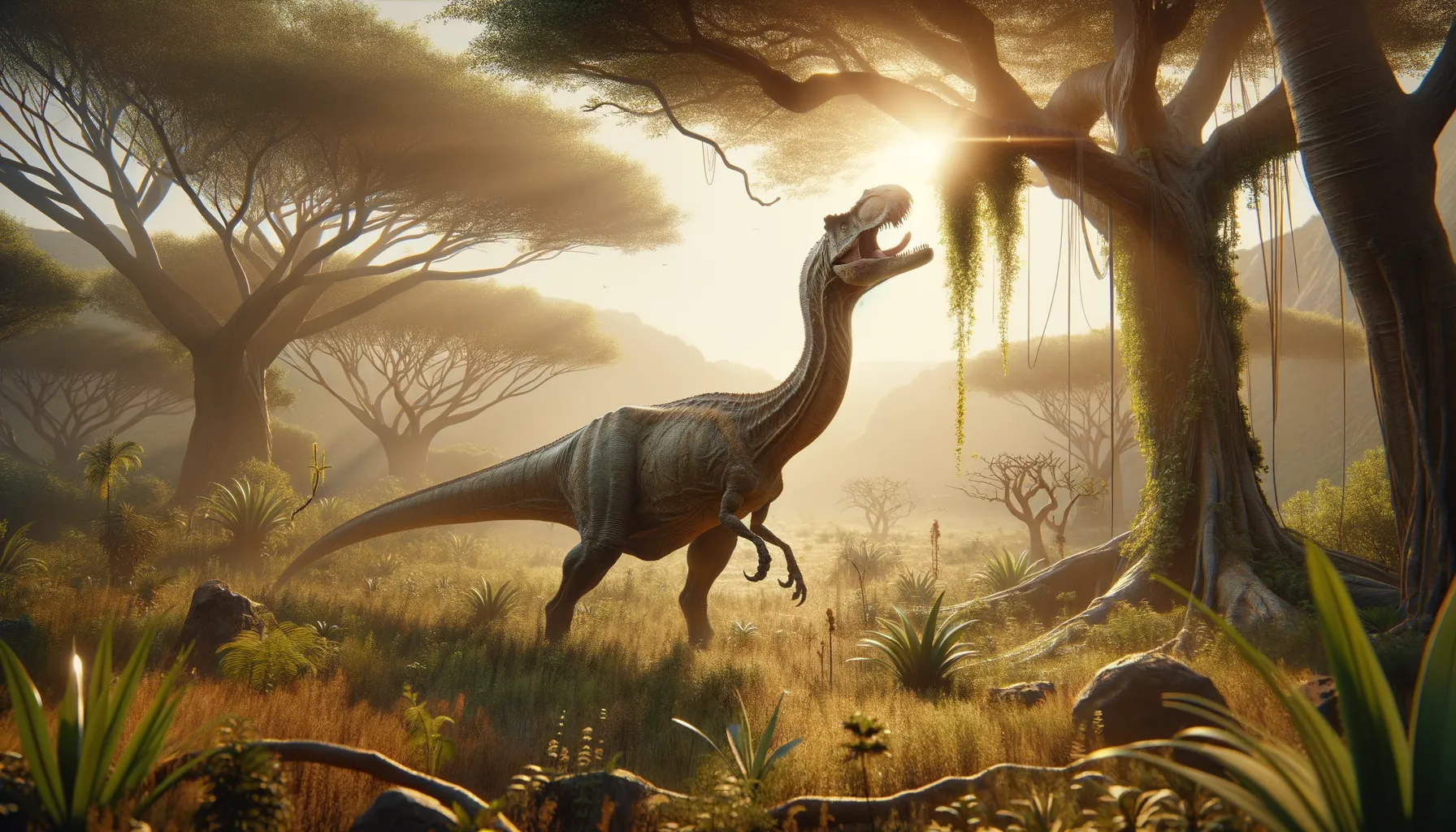
Kotasaurus
A gentle giant of the Jurassic age.
Period
Jurassic
Length
Around 9-10 meters in length.
Height
Approximately 3 meters tall at the shoulders.
Weight
Estimated to weigh around 2 to 4 tons.
Kotasaurus was an early sauropod dinosaur that lived during the early Jurassic period. It was known for its long neck and tail, which helped it reach and consume vegetation high off the ground. As a plant-eater, it played a crucial role in the ecosystem, helping to maintain plant diversity. Its fossils provide valuable insights into the evolution of sauropods, the giant long-necked dinosaurs that later dominated the land.
Diet
Kotasaurus primarily fed on ferns, conifers, and other prehistoric plants. Its long neck allowed it to reach high vegetation, which was an advantage for feeding in forests. This herbivore likely consumed large amounts of plant material daily to sustain its massive body size.
Hunting
As an herbivore, Kotasaurus did not hunt other animals. Its primary focus was finding and consuming sufficient plant material to meet its dietary needs. It likely used its size and long neck to access food sources that smaller herbivores couldn't reach.
Environmental challenges
During the Jurassic period, Kotasaurus faced challenges such as varying climates and competition for food. As forests expanded, finding nutritious plants could be difficult during dry spells. Predators like theropods posed threats, but its size offered natural defense. Though adaptable, changes in plant availability affected their ability to thrive regularly.
Speed
Relatively slow-moving due to its large size.
Lifespan
Possibly up to 50 to 70 years.
First discovery
First discovered in India in the early 1980s.
Fun Facts
- Kotasaurus was a large herbivorous dinosaur that lived around 190 million years ago during the Early Jurassic period.
- Its fossils have been discovered in the Kota Formation in India, which is how it got its name.
- Kotasaurus is known for its long neck and tail, similar to other sauropod dinosaurs, which helped it reach high vegetation for feeding.
- This dinosaur was part of a group known for being some of the largest animals to have ever walked the Earth.
- Kotasaurus is thought to have traveled in herds, providing safety in numbers from predators.
- It was one of the earliest known sauropods, helping scientists understand the evolution of these gigantic creatures.
- While Kotasaurus is not as famous as some other dinosaurs, it offers important insights into the early days of the age of dinosaurs.
Growth and Development
Kotasaurus likely hatched from eggs, similar to other sauropods, and experienced rapid growth during its early years. Its skeletal structure indicates features designed for supporting its massive body and extensive neck development. As it aged, its size and strength increased, aiding in survival against predators.
Habitat
Kotasaurus thrived in lush, forested environments with diverse vegetation. These habitats provided ample food resources and sheltered locations. It may have lived near open plains and river valleys, moving between different areas to access seasonal food supplies. Changes in plant life shapes its habitat preferences.
Interaction with other species
Kotasaurus likely coexisted with other herbivorous dinosaurs, sharing feeding areas and resources. While generally non-aggressive, resource competition could lead to territorial disputes. Predators could have used Kotasaurus as prey, especially the young. Fossil evidence hints at possible herd behaviors for increased protection.
Natural lifespan
In ideal conditions, Kotasaurus could live multiple decades.
Reproduction
Kotasaurus reproduced by laying eggs, which were likely buried or hidden for protection. Parental care might have included guarding or monitoring the nesting area. Hatchlings were vulnerable and possibly grew quickly to increase survival rates. Clutch sizes and specific breeding behaviors remain largely speculative.
Social behaviour
Kotasaurus might have lived in small herds, providing communal protection against predators. Social structures likely facilitated coordinated movement between feeding areas. Herds promoted gene exchange and safeguarded young and vulnerable members. Communication could include vocalizations or body signals for efficient interaction.
Fossil locations
Fossils of Kotasaurus have been primarily found in the Kota Formation of India. These discoveries have provided significant insights into sauropod evolution in the early Jurassic. The area's geology offers excellent preservation conditions, allowing paleontologists to study various elements of Kotasaurus's anatomy. Ongoing excavations may reveal further details about its distribution.
